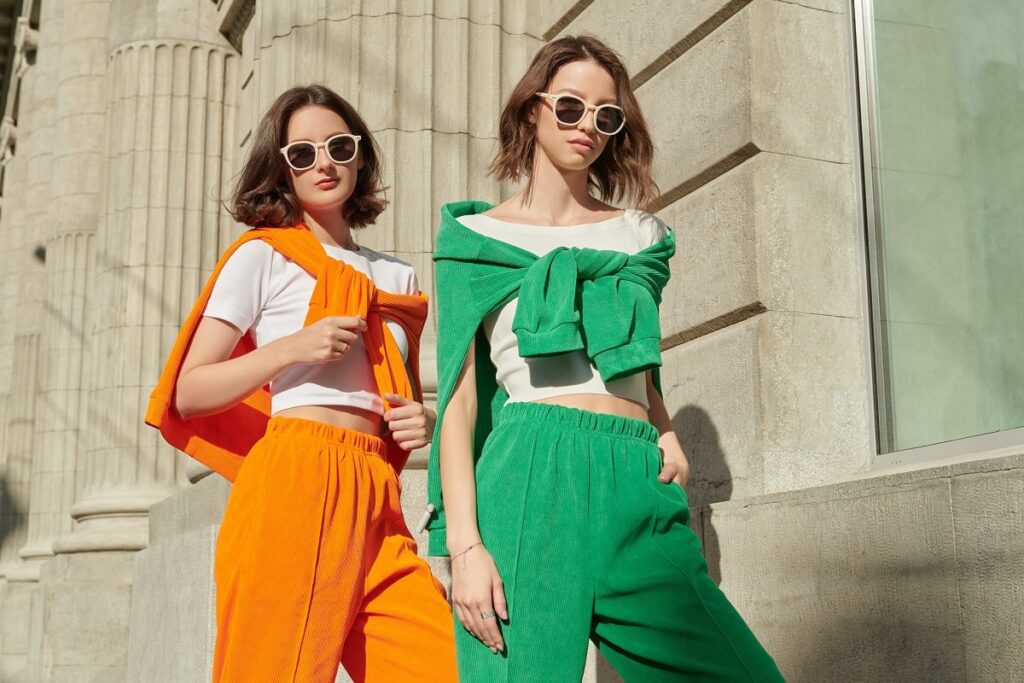High fashion is more than just clothes—it’s a living, breathing reflection of society’s pulse. From the opulent ball gowns of the 19th century to today’s boundary-pushing digital designs, high fashion has evolved dramatically, shaped by cultural shifts, technological advancements, and bold creative minds. This article dives into the rich history of high fashion, its key milestones, and where it’s headed next, all while weaving in a personal perspective to make you feel like you’re flipping through a glossy fashion magazine with a friend.
The Birth of High Fashion: A Parisian Beginning
High fashion as we know it began in the mid-19th century in Paris, where one man changed the game forever. Charles Frederick Worth, an English designer, set up shop in the City of Light and started sewing his name into garments—a revolutionary move at the time. His vision turned dressmaking into an art form, laying the foundation for what we now call haute couture. Suddenly, fashion wasn’t just about utility; it was about prestige, creativity, and individuality.
Why Was Worth So Important?
Worth didn’t just make dresses; he created a brand. By treating his clients like royalty and designing custom pieces, he transformed fashion into a status symbol. His work with Empress Eugénie of France put his name on the map, making Paris the epicenter of high fashion—a title it still holds. Imagine being a wealthy woman in 1860, stepping into Worth’s atelier, knowing you’re about to wear something no one else could claim. That’s the magic he sparked.
The Rise of Haute Couture: Exclusivity Meets Artistry
Haute couture, French for “high sewing,” emerged as the pinnacle of luxury fashion. These are not just clothes; they’re hand-crafted masterpieces, often taking hundreds of hours to create. Houses like Chanel, Dior, and Givenchy became synonymous with this craft, showcasing their collections during Paris Fashion Week, where every stitch tells a story of unparalleled skill.
What Makes Haute Couture Special?
Haute couture is defined by its exclusivity—garments are custom-made for a specific client, using the finest materials and techniques. Think of a Dior gown with hand-embroidered sequins that shimmer like a starry night. Only a handful of houses meet the strict criteria set by the Chambre Syndicale de la Haute Couture, ensuring that couture remains a rare art form. It’s fashion’s equivalent of a Michelin-starred meal—decadent, precise, and unforgettable.
The Challenges of Couture Today
Despite its allure, haute couture faces challenges in the modern era. The high cost—often tens of thousands of dollars per piece—limits its clientele to the ultra-wealthy. Yet, couture houses persist, using these collections to showcase their creativity and set trends that trickle down to ready-to-wear lines. It’s a delicate balance between art and commerce, but one that keeps the fashion world spinning.
Ready-to-Wear: Making High Fashion Accessible
In the 1960s, high fashion took a democratic turn with the rise of ready-to-wear (prêt-à-porter). Designers like Mary Quant and André Courrèges introduced youthful, mass-produced clothing that brought high fashion to the masses. Suddenly, you didn’t need a private fitting with Dior to wear something chic—department stores were stocked with stylish pieces inspired by the runways.
How Did Ready-to-Wear Change the Game?
Ready-to-wear made fashion inclusive. It allowed everyday people to channel the glamour of high fashion without breaking the bank. Designers began creating collections that were produced in standard sizes, making style accessible to a broader audience. Picture a young woman in 1965 swinging through London in a Mary Quant miniskirt—fashion was no longer just for the elite; it was for anyone with a sense of style.
Pros and Cons of Ready-to-Wear
| Aspect | Pros | Cons |
|---|---|---|
| Accessibility | Affordable and available to the masses | Lacks the exclusivity of couture |
| Production | Faster production, wider distribution | May compromise on quality |
| Creativity | Allows designers to experiment broadly | Less focus on bespoke craftsmanship |
Street Style and Subcultures: The New Influencers
By the late 20th century, high fashion began to draw inspiration from the streets. Designers like Vivienne Westwood and Alexander McQueen embraced subcultures—punk, grunge, hip-hop—and wove them into their collections. This fusion blurred the lines between high fashion and everyday style, creating a dynamic energy that still drives the industry today.
The Punk Revolution in Fashion
Vivienne Westwood’s punk-inspired designs in the 1970s were a middle finger to traditional elegance. Think ripped t-shirts, safety pins, and bold plaid patterns. I remember stumbling across a vintage Westwood jacket in a thrift store years ago—its rebellious vibe made me feel like I could conquer the world. Punk showed that fashion could be raw, political, and deeply personal, influencing designers to think outside the atelier.
Streetwear’s Meteoric Rise
Fast forward to the 2010s, and streetwear became high fashion’s cool younger sibling. Brands like Off-White and Supreme collaborated with luxury houses like Louis Vuitton, proving that hoodies and sneakers could share the runway with ball gowns. This shift reflects a broader cultural move toward authenticity—people want clothes that feel real, not just aspirational.
Technology’s Role in High Fashion’s Evolution
Technology has been a game-changer for high fashion. From 3D printing to virtual runway shows, designers are embracing innovation to push boundaries. Digital fashion—clothing that exists only in virtual spaces—has even emerged, allowing people to “wear” designs in video games or social media filters.
3D Printing and Sustainable Design
Designers like Iris van Herpen have used 3D printing to create otherworldly garments that defy traditional construction. These pieces, often resembling wearable sculptures, show how technology can merge with artistry. Meanwhile, sustainable fashion has gained traction, with brands like Stella McCartney using eco-friendly materials to address environmental concerns.
Digital Fashion and the Metaverse
Digital fashion is the future—or at least, it’s trying to be. Brands like The Fabricant create virtual garments that you can “wear” in the metaverse. Imagine buying a $10,000 digital dress for your avatar—sounds wild, but it’s happening. This trend raises questions about accessibility and sustainability, but it’s undeniably exciting for fashion enthusiasts.
Comparing Haute Couture, Ready-to-Wear, and Digital Fashion
| Category | Haute Couture | Ready-to-Wear | Digital Fashion |
|---|---|---|---|
| Exclusivity | Ultra-exclusive, custom-made | Mass-produced, widely available | Virtual, niche market |
| Cost | Extremely expensive | Affordable to mid-range | Varies, often premium |
| Production Time | Hundreds of hours | Weeks to months | Instant (digital) |
| Sustainability | High material waste | Moderate waste | Minimal physical waste |
The Influence of Social Media and Influencers
Social media has democratized high fashion even further. Platforms like Instagram and TikTok let designers and influencers showcase trends in real-time, reaching millions instantly. Fashion weeks are no longer just for industry insiders—anyone with a smartphone can join the conversation.
How Influencers Shape Trends
Influencers like Chiara Ferragni and A$AP Rocky have become tastemakers, bridging the gap between designers and consumers. Their curated feeds make high fashion feel approachable, inspiring fans to experiment with their style. I once tried recreating a look I saw on Instagram, pairing a thrifted blazer with bold sneakers—it wasn’t perfect, but it felt like me.
The Downside of Fast Fashion
Social media also fuels fast fashion, where brands like Shein churn out cheap, trendy clothes at breakneck speed. While this makes style accessible, it comes at a cost—environmental damage and ethical concerns about labor practices. High fashion is responding by emphasizing sustainability, with designers like Gabriela Hearst prioritizing eco-conscious production.
People Also Ask (PAA)
What is the difference between haute couture and ready-to-wear?
Haute couture involves custom-made, hand-crafted garments, while ready-to-wear is mass-produced in standard sizes. Couture is exclusive and expensive, often costing thousands, whereas ready-to-wear is more affordable and accessible. Both play vital roles in high fashion, catering to different audiences.
Where can I buy high fashion clothing?
High fashion is available through luxury retailers like Net-a-Porter, Farfetch, or directly from brand boutiques like Chanel or Gucci. For budget-friendly options, try consignment platforms like The RealReal or Vestiaire Collective for pre-owned pieces. Always verify authenticity when shopping secondhand.
What are the best tools for aspiring fashion designers?
Aspiring designers can use tools like Adobe Illustrator for sketching, Clo3D for 3D modeling, and Canva for mood boards. Online courses from platforms like Yellowbrick or Coursera offer insights into fashion design and marketing. Networking on LinkedIn or attending fashion events can also open doors.
How has technology impacted high fashion?
Technology has revolutionized high fashion through 3D printing, digital runways, and virtual fashion. It allows for innovative designs, sustainable practices, and broader accessibility via social media. However, it also raises questions about authenticity and the environmental cost of production.
The Future of High Fashion: Where Are We Headed?
High fashion is at a crossroads. Sustainability is no longer a buzzword—it’s a necessity. Designers are exploring circular fashion, where garments are recycled or repurposed. Meanwhile, the metaverse offers new creative possibilities, though it risks alienating traditionalists who value the tactile beauty of a hand-stitched gown.
The Rise of Inclusive Design
Inclusivity is reshaping high fashion. Brands are embracing diverse body types, gender identities, and cultural backgrounds. Designers like Savage x Fenty by Rihanna are leading the charge, proving that high fashion can be for everyone. This shift feels personal—growing up, I rarely saw my body type on runways, but today’s inclusivity makes fashion feel like a celebration of all.
AI and Fashion: Friend or Foe?
Artificial intelligence is creeping into fashion, from trend forecasting to personalized shopping experiences. While AI can streamline design processes, it also sparks debates about creativity. Can a computer replicate the soul of a McQueen gown? I doubt it, but it’s a tool designers are learning to wield.
FAQ Section
What is high fashion?
High fashion refers to exclusive, innovative clothing created by top designers or luxury brands, often showcased during fashion weeks. It includes haute couture and high-end ready-to-wear, emphasizing creativity and craftsmanship.
How can I start a career in high fashion?
Start by studying fashion design or marketing through programs like those offered by Yellowbrick or FIT. Build a portfolio, intern with designers or brands, and network at industry events. Passion and persistence are key.
Why is haute couture so expensive?
Haute couture’s high cost comes from its bespoke nature—garments are hand-crafted with premium materials and take hundreds of hours to create. The exclusivity and artistry justify the price for elite clients.
Where can I learn more about fashion history?
Explore books like Fashion: The Definitive History of Costume and Style or visit museum exhibitions like the Met’s Costume Institute. Online platforms like Vogue Runway or Yellowbrick offer deep dives into fashion’s evolution.
How does sustainability impact high fashion?
Sustainability pushes designers to use eco-friendly materials and ethical production methods. Brands like Stella McCartney lead the way, reducing waste and promoting circular fashion to address environmental concerns.
Conclusion: High Fashion’s Ever-Evolving Story
High fashion is a mirror of our world—constantly shifting, endlessly creative, and deeply personal. From Worth’s Parisian atelier to digital designs in the metaverse, its evolution reflects our values, dreams, and innovations. Whether you’re a designer sketching your first collection or a fashion lover scrolling Instagram for inspiration, high fashion invites you to be part of its story. So, what’s your next style move?









Leave a Reply